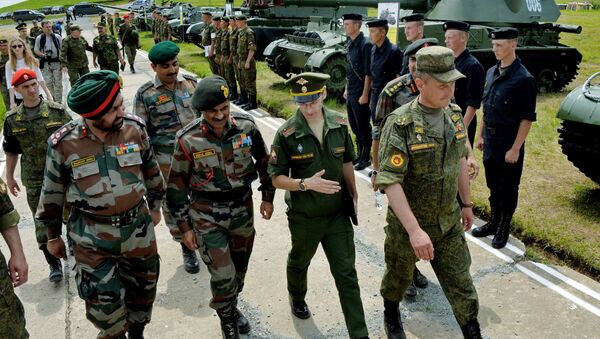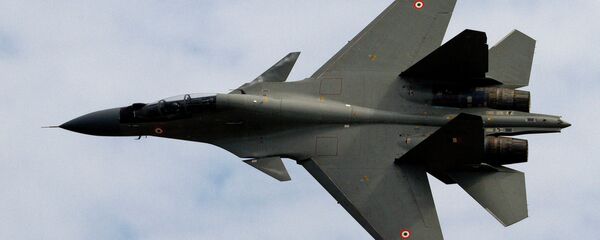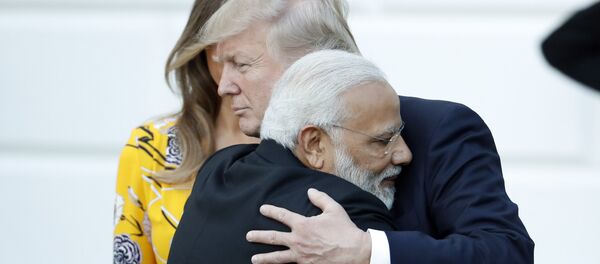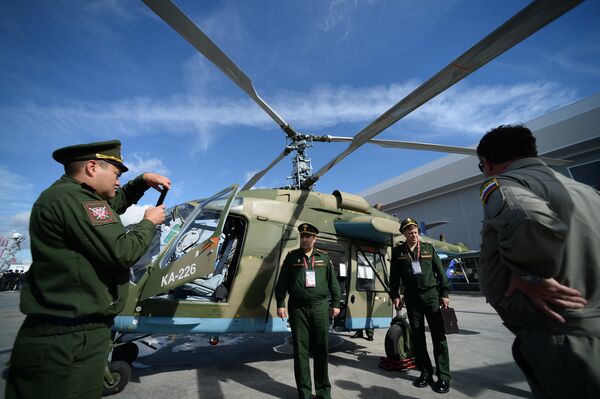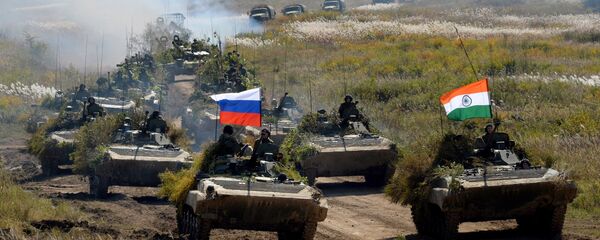According to a recent report by the Stockholm International Peace Research Institute (SIPRI), India has become the number one weapons importer in the world, accounting for 13% of all sales between 2012 and 2016. About 68% of India's arms imports come from Russia, with the US accounting for 14%, and seeking to expand. Seeking to diversify its suppliers in recent years, Delhi has also expanded military ties with Israel, France, Spain and South Korea.
Last week, ahead of Indian Prime Minister Narendra Modi's visit to the US for his first meeting with President Donald Trump, Indian Finance and Defense Minister Arun Jaitley flew to Moscow to hold negotiations on finalizing weapons contracts worth over $10.5 billion, to add to the $4 billion portfolio Rosoboronexport already has with the country.

This week, Indian media reported that Russia was prepared to supply India with MiG-35 4++ generation multirole fighters. This was important, according to observers, because the much-anticipated joint venture agreement between Delhi and Washington on the manufacture of F-16 fighter jets in India wasn't mentioned in the joint communique released following Modi's visit with Trump, indicating a possible snag in that deal.
Last week, MiG Corporation general director Ilya Tarasenko told reporters that his company sees the MiG-35 as an excellent alternative to foreign competitors' fourth and fifth generation offerings. According to the official, this has to do in large part with MiG's commitment to developing the necessary service infrastructure, as well as its willingness to engage in the localization of production in cases where major contracts have been signed.
Russian defense companies have major plans for the Indian market. In addition to the MiG-35, Russia is looking to supply India with the S-400 air defense system, up to 200 Ka-226T utility helicopters, 48 Mil Mi-17 multiuse helicopters, two Beriev A-50 AWACS planes, and four Admiral Grigorovich-class frigates. Moscow is also believed to be in negotiations on the modernization of India's fleet of Su-30MKI and MiG-29K fighters via their armament with new, longer range air-to-air missiles.
But the US too is making a serious effort to move in on the Indian market, with support from the White House. On Thursday, the White House okayed the sale of over $2 billion worth of military drones to Delhi (a deal that still needs Congressional approval to move forward). Negotiations are also underway on the sale of C-17 transport helicopters and Ah-64 Apache attack helicopters to the country.
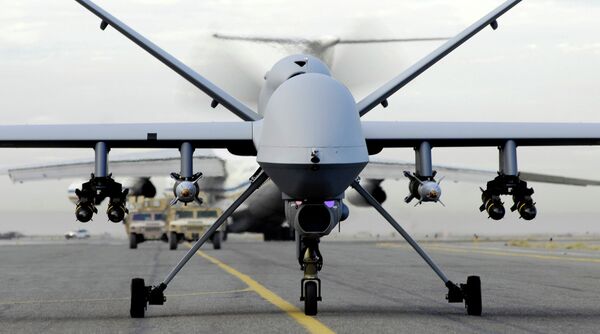
Commenting on these developments, RIA Novosti contributor Ilya Plekhanov wrote that at present, there are several factors favoring Russia in the battle for the Indian arms market. These include the two countries' long and proud history of military cooperation, the existence of an established base of repair and maintenance facilities for equipment, plus the quality and comparatively low cost of Russian weapons.
As for the US, they entered the Indian arms market in a big way only in 2013, Plekhanov recalled, with a much-discussed deal worth $2 billion. "In the five year period before that, total sales were estimated only in the hundreds of millions of dollars," the observer noted.
Geopolitics is also playing a role in US calculations, according to the journalist, with the US looking at using weapons sales to India to help contain China, put pressure on Iran, and find a substitute for Pakistan in the fight against Afghan Islamists.
Earlier this month, Pentagon Chief Jim Mattis described India as a key US partner in the defense sector; meanwhile, during his meeting with Modi, Trump praised India for its purchase of US weapons, and stressed that the Indian-US relationship "has never been stronger, has never been better."
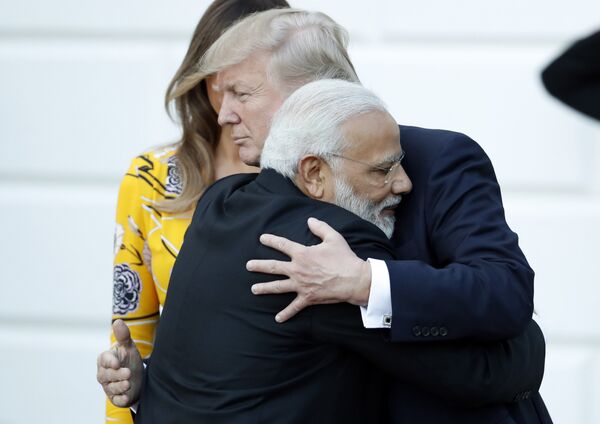
As far as the Russian defense industry's attitudes toward competition from the US were concerned, Plekhanov suggested that MiG Corporation head Ilya Tarasenko probably said it best.
Speaking to Reuters last week, Tarasenko emphasized that Russia was not afraid of competition from the US in the Indian arms market. MiG, he recalled, has a history of cooperation with India which stretches back over 50 years. Russia, he noted, sees attempts from other players to enter the Indian market as a way to better understand, and meet, the country's defense needs.
